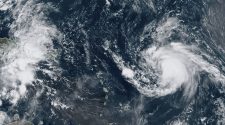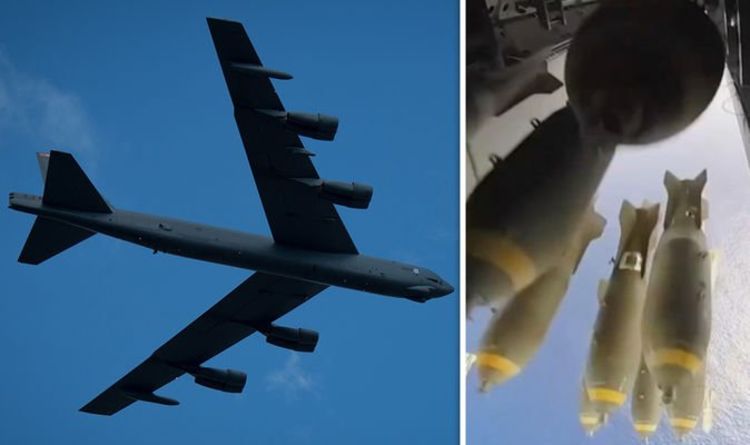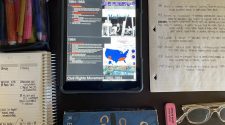On January 17, 1966, a B-52G USAF bomber collided with a KC-135 tanker during a refuelling mission at 31,000 feet over the Mediterranean Sea. The KC-135 was completely destroyed when its fuel load ignited, killing all four members on board, while four of the B-52G crew managed to successfully bail and parachute to safety. However, of the four MK28-type hydrogen bombs the B-52G carried, three-headed for land in the small fishing village of Palomares in Almeria, Spain.
Worse still, the explosives in two of the weapons detonated on impact, contaminating the surrounding area of almost one square mile with plutonium.
Amazon Prime’s “Phenomenon” series detailed the events that unfolded afterwards.
The 1999 documentary revealed: “The detonation ordinance in two of the bombs explodes, digging huge craters and scattering plutonium everywhere.
“For the three months that follow, nearly 2,000 US and Spanish personnel work to decontaminate the area.
The B-52 bomber dropped its nuclear weapons (Image: GETTY)

The accident occurred during a refuelling mission (Image: GETTY)
The detonation ordinance in two of the bombs explodes
“The fourth bomb sinks off the coast of Spain and isn’t recovered until three months later when it is located five miles offshore by the one-man submersible Alvin.
“The sub is piloted by the son of famous aviator Charles Lindbergh.”
With the event coming at the height of the Cold War, the detonations arguably threatened to take matters one step further and spark World War 3.
In 1962, just four years earlier, this situation had arguably reached the closest to all-out conflict since World War 2, during the Cuban Missile Crisis.
A year later, following public pressure from the nuclear disarmament movement, US President John F. Kennedy and Soviet Premier Nikita Khrushchev signed the Partial Test Ban Treaty.

The incident happened off the coast of Spain (Image: GOOGLE)

The two cases recovered from the bombs (Image: WIKI)
This prohibited the test detonation of nuclear weapons – except underground – by either of the superpowers.
The same documentary went on to explain how the event sparked outrage.
The narrator added: “An international furore erupts as Spanish citizens violently protest the US practice of flying over allied airspace armed with nuclear weapons.
“Almost 1,400 tonnes of radiative soil and plant matter is excavated.
“This is shipped to the US where it is disposed of at the Savannah River Plant.”
However, it was not the only accident of its kind.
In 1961, a Soviet nuclear submarine broke down deep in NATO waters in what has been dubbed Moscow’s “deepest secret”.
With Captain Nikolai Zateyev at the helm, the botched vessel took part in a covert operation where its job was to imitate a US vessel of the same kind orchestrating an attack on the USSR.
It was to travel from the Norwegian Sea, into the North Atlantic, around Iceland and head back to Soviet territory.
On July 4, 1961, the pressure in the starboard nuclear reactor’s cooling system dropped to zero, near the coast of Greenland.

World War 3 flashpoints (Image: DX)
The crew found a major leak in the reactor coolant system, causing the coolant pumps to fail.
The submarine could not request assistance because a separate accident had damaged the long-range radio system.
The control rods were automatically inserted by the emergency system, but the reactor temperature rose uncontrollably.
Making a drastic decision, Zateyev ordered the engineering section to fabricate a new coolant system by cutting off an air vent valve and welding a water-supplying pipe into it.
This required the men to work in high radiation for extended periods.
The accident released radioactive steam containing fission products that were drawn into the ship’s ventilation system and spread to other compartments of the ship.
The jury-rigged cooling water system successfully reduced the temperature in the reactor.
The incident irradiated the entire crew, most of the ship, and some of the ballistic missiles on board.
Thankfully, the crew was evacuated eventually and the vessel limped back to Soviet waters.
















